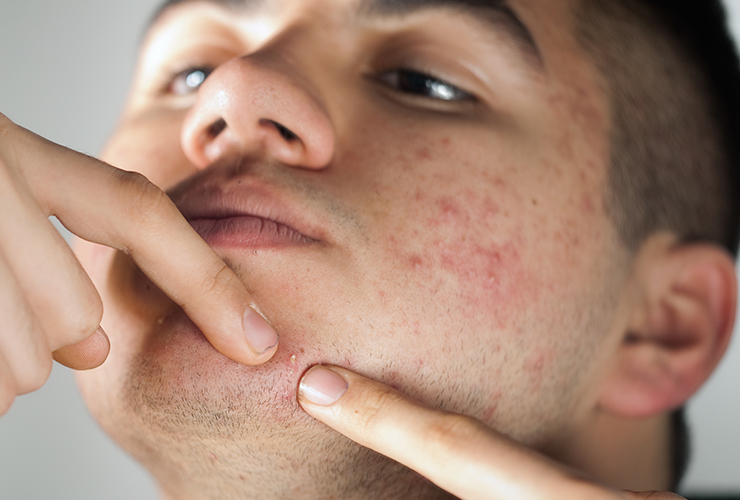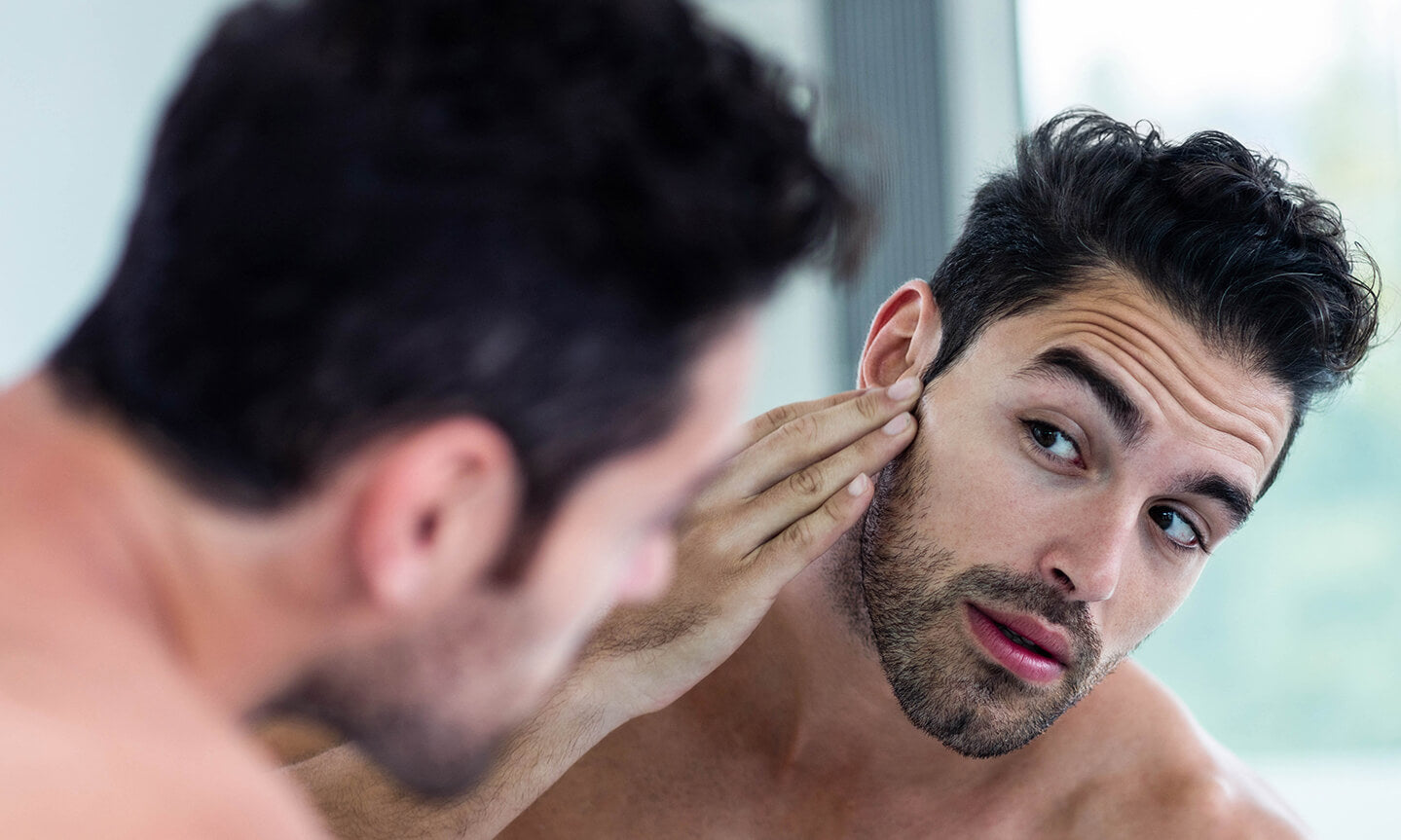Have you ever wondered if your beard could be the cause of your acne? Well, you’re not alone! Many men are concerned about the potential connection between their facial hair and breakouts. In this article, we’ll explore this topic in detail and provide you with all the information you need to understand whether or not your beard can cause acne.
Here at BeardsDude.com, we strive to provide our readers with accurate and reliable information. We understand that your beard is an important part of your personal style, and we want to ensure that you have all the knowledge you need to care for it properly. Our team of experts has delved into the research on this subject to give you a comprehensive overview.
In the upcoming article, we’ll delve into the factors that can contribute to acne and discuss whether or not your beard can play a role. We’ll cover topics such as bacteria, oil production, and skin irritation. By the end of the article, you’ll have a clear understanding of how your beard may impact your skin and what steps you can take to maintain a healthy complexion.
Stay tuned to BeardsDude.com for the full article on whether or not a beard can cause acne. We’ve got you covered with all the information you need to make informed decisions about your beard care routine.

Understanding the link between beards and acne
If you’ve ever grown out a beard, you may have noticed small bumps or pimples appearing on your skin underneath the beard. This can be quite frustrating and may make you wonder if your beard is causing acne. The truth is, there is a link between beards and acne, but it’s important to understand the factors that contribute to this issue.
Factors that contribute to beard-related acne
One of the main factors that contribute to beard-related acne is the buildup of sebum, which is the natural oil produced by your skin. Sebum can accumulate in the hair follicles and pores on your face, leading to clogged pores and the formation of acne.
Another factor that can contribute to acne under a beard is the accumulation of bacteria and dirt. Throughout the day, your beard can collect dirt, sweat, and other environmental pollutants, which can then get trapped in your pores and lead to acne breakouts.
The role of sebum in beard-related acne
Sebum plays a crucial role in keeping your skin moisturized and protected. However, when too much sebum is produced, it can mix with dead skin cells and bacteria in your pores, leading to the formation of acne. This is particularly common in individuals with oily or combination skin types.
When you have a beard, the sebum produced by your skin can get trapped in your facial hair, making it more difficult for the sebum to escape. This can result in a buildup of sebum, leading to increased acne breakouts.
How bacteria and dirt can lead to acne under a beard
As mentioned earlier, your beard can collect bacteria, dirt, sweat, and other impurities throughout the day. When these impurities get trapped in your pores, they create an environment ideal for the growth of acne-causing bacteria. This can lead to inflammation and the formation of pimples or other types of acne.
It’s important to note that the problem isn’t the beard itself, but rather the hygiene and maintenance practices associated with having a beard. With proper hygiene and regular cleaning, you can prevent the accumulation of bacteria and dirt, reducing the risk of acne breakouts.
The importance of proper hygiene in preventing beard-related acne
Maintaining good hygiene is crucial when it comes to preventing acne under a beard. Here are a few tips to help you keep your beard and the skin underneath clean:
-
Wash your beard regularly with a gentle cleanser or beard shampoo to remove dirt, bacteria, and excess sebum. Avoid using harsh soaps or cleansers as they can strip your skin of natural oils, leading to dryness and irritation.
-
Use lukewarm water to rinse your beard, as hot water can strip away the natural oils that keep your skin moisturized.
-
After washing, make sure to thoroughly pat dry your beard using a clean towel. Leaving your beard damp can create a humid environment that promotes the growth of bacteria.
-
Avoid touching your beard too often, as this can transfer bacteria and dirt from your hands to your face. If you need to touch your beard, make sure to wash your hands thoroughly beforehand.
Choosing the right beard care products to prevent acne
Using the right beard care products can also play a significant role in preventing acne under a beard. Here are a few recommendations:
-
Opt for a gentle beard oil or balm that moisturizes your beard without clogging your pores. Look for products with natural ingredients like jojoba oil or argan oil, which are non-comedogenic and won’t cause acne.
-
Avoid using heavy, greasy products that can weigh down your beard and promote the accumulation of sebum.
-
Consider using a beard brush or comb to distribute the natural oils evenly throughout your beard and prevent the buildup of sebum.
By choosing the right products and adopting a regular hygiene routine, you can maintain a clean and healthy beard, minimizing the risk of acne breakouts.
The impact of beard grooming practices on acne
In addition to hygiene, your grooming practices can also have an impact on acne under a beard. Here are a few key points to consider:
-
Trim your beard regularly to maintain its shape and length. Long and unruly beards can trap more dirt and bacteria, increasing the risk of acne breakouts.
-
Avoid over-brushing your beard, as this can irritate your skin and lead to inflammation.
-
Use a sharp and clean razor when shaving your neck and cheek areas. Dull blades and poor shaving techniques can cause skin irritation and contribute to acne breakouts.
-
If you have acne-prone skin, consider avoiding heavy beard oils or waxes that can clog your pores. Opt for lighter and non-comedogenic products instead.
Addressing common misconceptions about beards and acne
There are some common misconceptions about beards and their potential to cause acne. Here are a few debunked:
-
Beards do not automatically cause acne. Acne is primarily caused by a combination of factors such as sebum production, clogged pores, bacteria, and inflammation. Proper hygiene and grooming practices can help prevent acne under a beard.
-
Shaving your beard will not necessarily get rid of acne. In fact, shaving can often irritate the skin and worsen acne breakouts. It’s important to focus on proper hygiene and skincare routines rather than relying solely on shaving to address acne.
-
Not everyone who grows a beard will experience acne. Individuals with oily or combination skin types are more prone to acne breakouts than those with dry or normal skin. However, with the right care and attention, individuals with any skin type can maintain a healthy beard and prevent acne.
Tips for managing and treating acne under a beard
If you already have acne under your beard, there are a few steps you can take to manage and treat it:
-
Avoid picking or popping your pimples, as this can lead to scarring and further infection.
-
Apply a gentle and non-comedogenic acne treatment product to the affected areas. Look for products that contain ingredients like benzoyl peroxide or salicylic acid, which can help reduce inflammation and kill acne-causing bacteria.
-
Consider using an exfoliating cleanser or scrub once or twice a week to remove dead skin cells and unclog your pores. However, be gentle when exfoliating to avoid irritating your skin.
-
If your acne persists or becomes severe, it’s best to consult a dermatologist. They can provide a personalized treatment plan based on the severity of your acne and your skin type.
Consulting a dermatologist for severe beard-related acne
If you’re experiencing severe acne under your beard, it’s important to consult a dermatologist. They can help identify the underlying causes of your acne and recommend appropriate treatment options.
A dermatologist may prescribe topical medications, oral medications, or a combination of both to help manage your acne. They can also provide advice on proper skincare routines and recommend specific beard care products that are suitable for your skin type.
Remember, it’s always best to seek professional help if you’re unsure or if your acne is persistent and causing significant distress.
The relationship between beard type and acne
While the presence of a beard does not directly cause acne, certain beard types may increase the risk of acne breakouts. People with dense and long beards are more likely to experience acne compared to those with shorter, well-trimmed beards.
The density and length of a beard can affect the circulation of air and the absorption of sweat and oils, leading to the accumulation of bacteria and dirt. However, with proper hygiene and grooming practices, individuals with any beard type can maintain a healthy and acne-free beard.
Understanding the difference between folliculitis and acne
It’s important to differentiate between folliculitis and acne, as they can appear similar but have different causes. Folliculitis is the inflammation of hair follicles, which can lead to small red bumps or pustules. It is often caused by bacteria or fungi entering the hair follicles.
Acne, on the other hand, is a skin condition characterized by the formation of pimples, blackheads, whiteheads, and cysts. Acne is primarily caused by a combination of factors such as sebum production, clogged pores, bacteria, and inflammation.
While both folliculitis and acne can occur under a beard, it’s advisable to consult a dermatologist to determine the exact cause and receive appropriate treatment.
The impact of diet on beard-related acne
Your diet can also play a role in the development of acne under a beard. Consuming a diet high in processed or fatty foods, sugars, and dairy products has been linked to increased sebum production and acne breakouts.
To maintain a healthy beard and prevent acne, it’s important to incorporate a balanced diet rich in fruits, vegetables, lean proteins, and whole grains. Drinking plenty of water and avoiding excessive caffeine and alcohol can also contribute to healthier skin.
Conclusion: Maintaining a healthy beard and preventing acne
In conclusion, while a beard does not directly cause acne, there is a link between beards and acne breakouts. Factors such as the buildup of sebum, accumulation of bacteria and dirt, and grooming practices can contribute to the development of acne under a beard.
To prevent acne under a beard, it’s important to maintain proper hygiene, regularly clean your beard, and choose suitable beard care products. Trim your beard regularly, and avoid using heavy, greasy products that can clog your pores. If you have acne-prone skin, consult a dermatologist for personalized advice and treatment options.
As with any skin condition, it’s important to be patient and consistent with your beard care routine. With proper care, you can enjoy a healthy, acne-free beard that enhances your personal style and boosts your self-confidence. Remember, your beard is an expression of your individuality and should be celebrated!

